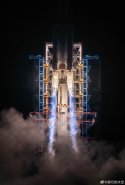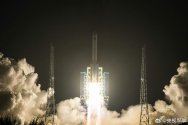Shenzhou 21 roll out.
Whats their entire timeline of missions up until manned landing on lunar surface? How many test launches of LM-10?
There are no detailled timelines, but it can be roughly be considered as following:
2025: Static fire and hopper test of the Long March 10A, Ground and Max Q abort tests of the Mengzhou lunar capsule, ground test of the lanyue lunar lander (Some have been accomplished)
2026: Completion of the CZ-10 launch pad, uncrewed maiden launch of the CZ-10A (single core) with Mengzhou, First recovery attempt of the CZ-10A
2026-2027: First Crewed launch of the CZ-10A with Mengzhou (at minimum on the 2nd CZ-10A/Mengzhou)
2027?: First launch of the tricore CZ-10 Y1 for a test (the nature of the test is uncertain)
2027-2028: Launch of the lunar equatorial remote sensing satellite to pick landing sites
2028: Launch of a crewed CZ-10 (Y2 or Y3) with Mengzhou on a lunar orbit mission, launch of uncrewed CZ-10 (Y2/Y3) for another uncertain test
2029: Launch of two CZ-10 Y4/Y5 carrying Mengzhou and Lanyue for the crewed lunar landing
The largest uncertainty comes from the date and roles of CZ-10 Y1/Y2/Y3, at least one of them will carry a crewed mengzhou in an Apollo-8-type mission in 2028, a few years ago it was announced tricore CZ-10 will launch in 2027, but that information has not be repeated in recent years. There are no informations on what the order and payloads of these launches could be, except that one will be a lunar orbit mission (there is a slim chance the crewed lunar orbit mission could be on the first CZ-10, but IMO unlikely).
However the fact that they need 5 CZ-10 (tricore) total for the preparation and execution of the crewed lunar landing was announced 6 months ago.




